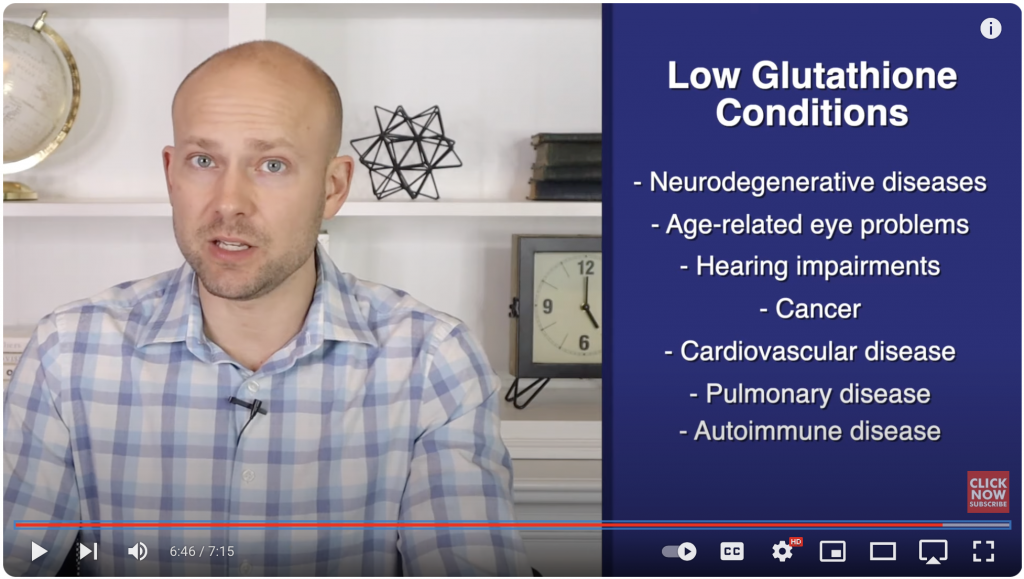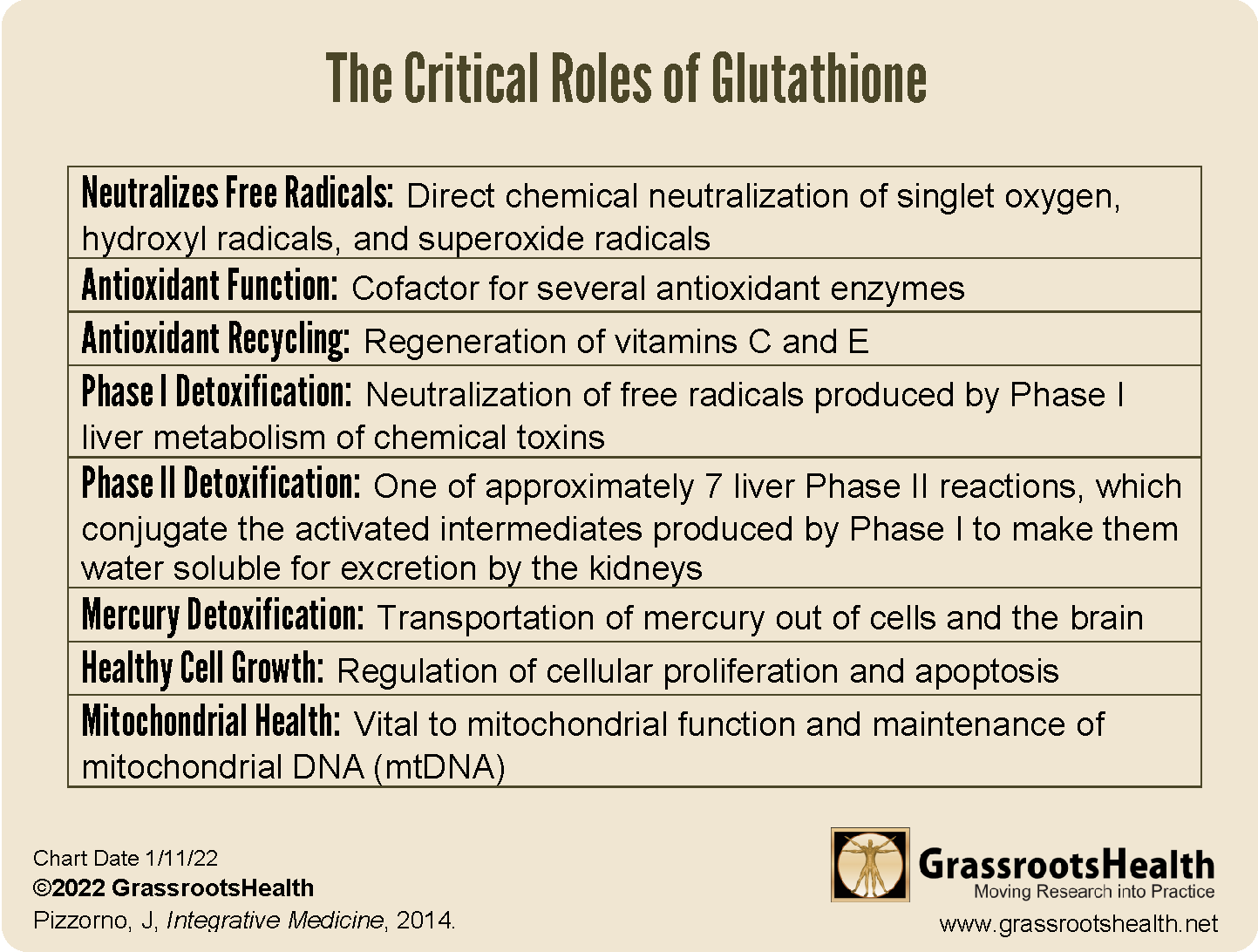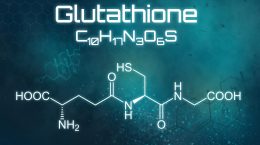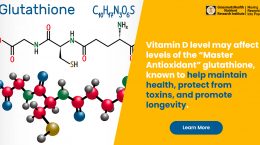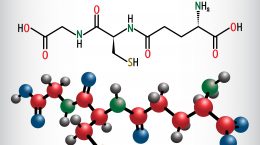Published on February 20, 2024
Studies find added benefit from the combined supplementation of vitamin D and L-cysteine for vitamin D status and activity versus vitamin D supplementation alone
Key Points
- Research over the last several years has illustrated a positive relationship between glutathione (GSH) and vitamin D, with higher vitamin D levels related to higher glutathione levels; additional research has demonstrated that correcting vitamin D deficiency can, in itself, increase glutathione levels
- Cysteine is often a limiting factor to GSH production, therefore, supplementing with L-cysteine can be used to improve GSH status in the body and has also been associated with lower levels of inflammation and insulin resistance; L-cysteine supplementation also helps to prevent the downregulation of vitamin D regulatory genes by way of increasing GSH
- N-Acetylcysteine (NAC) is another form of cysteine that is considered “…less toxic, less susceptible to oxidation (and dimerization) and is more soluble in water, making it a better source of cysteine than parenteral administration of cysteine itself.”
- GSH is necessary to help protect our cells from damage due to oxidative stress, mercury and other toxic metals, alcohol, persistent organic pollutants, and much more; it also helps protect our mitochondria, is a cofactor for many enzymes in the body, and is vital to energy production. Our bodies are able to naturally produce GSH, however, production decreases with age, and we can quickly become overwhelmed with toxins and other offenders that deplete it.
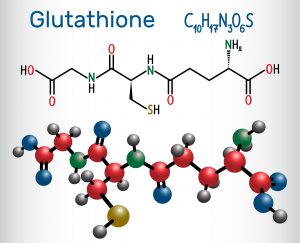 Many individuals respond poorly to vitamin D supplementation. While this can be due to several factors, including magnesium deficiency, several studies highlight the important influence of glutathione (GSH) levels on vitamin D status and activity. Research over the last several years has illustrated a positive relationship between GSH and vitamin D, with higher GSH levels related to higher vitamin D levels. Additional research has also demonstrated a bi-directional relationship; that correcting vitamin D deficiency can, in itself, increase GSH levels.
Many individuals respond poorly to vitamin D supplementation. While this can be due to several factors, including magnesium deficiency, several studies highlight the important influence of glutathione (GSH) levels on vitamin D status and activity. Research over the last several years has illustrated a positive relationship between GSH and vitamin D, with higher GSH levels related to higher vitamin D levels. Additional research has also demonstrated a bi-directional relationship; that correcting vitamin D deficiency can, in itself, increase GSH levels.
A publication by Jain et al. titled Glutathione Stimulates Vitamin D Regulatory and Glucose-Metabolism Genes, Lowers Oxidative Stress and Inflammation, and Increases 25 OHD Levels in Blood: A Novel Approach to Treat 25-Hydroxyvitamin D Deficiency clearly outlines this relationship and describes how increasing GSH has been shown to increase the bioavailability of 25(OH)D. According to the authors,
“…boosting GSH status beneficially upregulates the genes of VD metabolism and VDR, both of which are needed to increase the bioavailability and blood levels of 25(OH)VD and reduce inflammation levels.”
They also found that co-supplementation with vitamin D and L-cysteine resulted in the upregulation of vitamin D regulatory genes and boosted vitamin D levels in the blood, as well as reduced inflammation and insulin resistance – each with higher success compared to supplementing with vitamin D alone. As the publication concluded,
“Supplementation with a combination of vitamin D and L-cysteine or glutathione precursor, rather than supplementation with vitamin D alone, is beneficial and helps achieve more successful vitamin D supplementation.”
How Supplementing with L-cysteine can Improve Vitamin D Status and Activity
Glutathione is made of 3 different amino acids: cysteine, glycine, and glutamic acid. It is found in two different forms; reduced glutathione (GSH) is the “active” form that has the ability to repair oxidative damage, and oxidized glutathione (GSSG) is the inactive form that can be recycled back into GSH. The real “power” of glutathione is the readily available sulphur that it contains. Sulphur is sticky and grabs ahold of free radicals, toxins, and dangerous heavy metals, allowing your body to excrete these harmful substances.
Cysteine is often a limiting factor to GSH production, therefore, supplementing with L-cysteine can be used to improve GSH status in the body and has also been associated with lower levels of inflammation and insulin resistance. Research has shown that L-cysteine supplementation also helps prevent the downregulation of vitamin D regulatory genes by way of increasing glutathione.
One study by Alvarez et al. looked at the bloodwork from 693 healthy adults which measured their vitamin D levels, plasma glutathione, cysteine (a glutathione precursor), and multiple inflammatory markers to see what relationships existed. They found that vitamin D levels [25(OH)D] were positively associated with plasma glutathione (as vitamin D levels increased so did glutathione) and negatively associated with both GSSG and cysteine (as vitamin D levels increased, levels of GSSG and cysteine decreased). These associations remained statistically significant even after adjusting for other factors.
Why N-Acetylcysteine (NAC) Supplementation Might be a Better Option
N-Acetylcysteine (NAC) is another form of cysteine that is considered “…less toxic, less susceptible to oxidation (and dimerization) and is more soluble in water, making it a better source of cysteine than parenteral administration of cysteine itself,” according to Atkuri et al..
The following video briefly describes how NAC works to increase glutathione, and what that means in terms of overall health benefits.
Watch the Video: How Does NAC (N-Acetyl Cysteine) Actually Work?
What else is Glutathione Good For?
Many consider glutathione to be the “Master Antioxidant.” It is the most abundant antioxidant in the body, and it helps recycle other antioxidants, such as vitamins C and E. Glutathione is necessary to help protect our cells from damage due to oxidative stress, mercury and other toxic metals, alcohol, persistent organic pollutants, and much more. It also helps protect our mitochondria, is a cofactor for many enzymes in the body, and is vital to energy production.
Levels of glutathione within the cells and mitochondria are highly associated with health and longevity, and its deficiency is associated with loss of function with aging and many chronic diseases (including depression, anxiety, Alzheimer’s, Parkinson’s, heart disease, and even cancer). Our bodies are able to naturally produce this powerful antioxidant, however, we can quickly become overwhelmed with toxins and other offenders that deplete glutathione. On top of that, the production of glutathione decreases with age; when people reach age 40, they produce around 30% less glutathione, and by age 65, that reduction can reach 50%.
Higher levels of glutathione help to slow aging, clear the body of toxins, and prevent disease. Glutathione itself neutralizes free radicals, recycles antioxidants, is involved in phase 1 and 2 detoxification, helps transport mercury out of the cells and the brain, regulates cell growth, and is vital to mitochondrial and DNA health. Proper glutathione activity also strengthens and helps modulate the immune system, helps muscle tissues recover from damage, reduces recovery time, increases strength and endurance, and more.
The following table by Pizzorno, J. highlights the critical roles of glutathione.
Additional Ways to Support Glutathione Levels
While ensuring adequate vitamin D status is one way to help support healthy glutathione levels, the most common way to optimize glutathione levels is with supporting supplements. N‐acetyl cysteine and L‐glutamine are important for the production and activity of glutathione. B vitamins, especially the methylated vitamins B6, B9, and B12, are also critical to help the body produce glutathione, as is magnesium. Alpha lipoic acid and vitamins C and E directly recycle and extends the lifespan of glutathione – cleaning the molecule of any free‐radicals, toxins, and heavy metals that they might have grabbed.
Here are some other ways to help increase levels of glutathione, along with taking care to optimize vitamin D:
- limit alcohol consumption and avoid smoking cigarettes
- limit or avoid taking acetaminophen (found in Tylenol and other pharmaceutical products)
- decrease exposure to POPs
- increase intake of other antioxidants to decrease overall oxidative stress
- increase intake of nutrients that promote glutathione production, such as NAC (N-acetylcysteine), 1000 mg/day, whey, or SAMe
- get enough magnesium and selenium in the diet, as both are necessary for glutathione production
- the natural herb milk thistle can help recycle glutathione
- Aerobic exercise can increase your glutathione levels; start slow and build up to 30 minutes a day of walking or jogging, or play various sports
- foods such as almonds, cruciferous vegetables, and even alcohol-free beer have been shown to raise glutathione levels, as has meditation!
Measure Your Vitamin D Level, Along with Essential Minerals and Toxic Elements that can affect Glutathione Production
 Having and maintaining healthy vitamin D levels and other nutrient levels can help improve your health now and for your future. For healthy glutathione levels, consider measuring vitamin D along with
Having and maintaining healthy vitamin D levels and other nutrient levels can help improve your health now and for your future. For healthy glutathione levels, consider measuring vitamin D along with
- Magnesium PLUS Elements (highly recommended)
- Omega-3 Index with Ratios
- HbA1c (a measure of blood sugar health and insulin resistance)
- hsCRP (a measure of inflammation)
by creating your custom home test kit today. Take steps to improve the status of each of these measurements to benefit your overall health. You can also track your own intakes, symptoms and results to see what works best for YOU.
Enroll and test your levels today, learn what steps to take to improve your status of vitamin D (see below) and other nutrients and blood markers, and take action! By enrolling in the GrassrootsHealth projects, you are not only contributing valuable information to everyone, you are also gaining knowledge about how you could improve your own health through measuring and tracking your nutrient status, and educating yourself on how to improve it.


